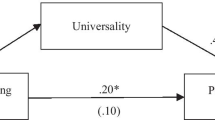Abstract
The purpose of this paper is to review the necessary components of a comprehensive group therapy program. The balancing between the didactic and the experiential portions, and an analysis of the selection criteria, along with the rationale for a particular sequencing of elements in the curriculum, are discussed. A line between supervision and personal therapy is drawn. The author describes the milieu necessary for a successful training program to evolve and makes suggestions for improvements. The various experiential aspects of training are presented and critically evaluated. The training situation is examined from the point of view of the faculty, the trainee and the patients involved. The author marshalls evidence indicating that personal group psychotherapy in a patient group is the preferred form for most trainees for the experiential part of the program. The paper concludes that the sharing and cohesiveness of training philosophies and methods by the faculty is a prerequisite to the success of any training program.
Similar content being viewed by others
References
Alnoes, R., Sigrell, B. (1975). Evaluation of the outcome of training groups using an analytic group psychotherapy technique.Psychotherapy and Psychosomatics, 25, 268–275.
Berman, A. L. (1975). Group psychotherapy training: Issues and models.Small Group Behaviour, 16(3), 325–344.
Dies, R. R. (1974). Attitudes toward the training of group psychotherapists.Small Group Behaviour, 5(1), 65–79.
Ekstein, R. (1964). Supervision of psychotherapy: Is it teaching? Is it administration? Or is it therapy?Psychotherapy: Theory Research and Practice, 1(3), 137–138.
Gauron, E. F., Proctor, S. A., Schroder, P. J. (1970). Group therapy training: A multidisciplinary approach.Perspectives in Psychiatric Care, 8(6), 262–267.
Goin, M. K., Burgoyne, R. W., Kline, F., Woods, S. M., Peck, J. S. (1976). Teaching dynamic psychotherapy by observation.American Journal of Psychotherapy, 30, 112–120.
Greben, S. E. (1976). Supervision of psychotherapy with psychiatric residents.Canadian Psychiatric Association Journal, 21, 141–144.
Harrison, R. (1977). Defenses and the need to know. In R. T. Golbrewski & A. Blumberg (Eds.),Sensitivity training and the laboratory approach (pp. 70–78). Itasca, IL: R. E. Peacock.
Hartley, D., Roback, H. B., Abrahamowitz, S. I. (1979). Deterioration effects in encounter groups. In H. B. Roback, S. I. Abrahamowitz & D. S. Stransberg (Eds.),Group psychotherapy research (pp. 214–221). Huntington, NY: Krieger.
Horwitz, L. (1967). Training groups for psychiatric residents.International Journal of Group Psychotherapy, 17, 421–435.
Jahoda, M. (1958).Current concepts of positive mental health. New York: Basic Books.
Kamin, I. (1966). The resident as patient in group psychotherapy.International Journal of Group Psychotherapy, 16, 313–320.
Malan, D. H., Balfour, R. H., Hood, V., Shooter, A. (1976). Group psychotherapy: A long term followup study.Archives of General Psychiatry, 33, 1303–1315.
Matarazzo, R. G. (1978). Research on the teaching and learning of psychotherapeutic skills. In S. L. Garfield & A. E. Bergin (Eds.),Handbook of psychotherapy and behaviour change (pp. 941–966). New York: John Wiley & Sons.
Mullan, H. (1958). The training of group psychotherapists.American Journal of Psychotherapy, 12, 495.
Nadelson, T. & Nadelson, C. (1975). Reflex and reflection: Defining psychotherapy in supervision. What is psychotherapy? Proceedings of the 9th International Congress on Psychotherapy, Oslo, 1973.Psychotherapy and Psychosomatics, 25, 207–216.
OGPA (1983).OGPA Training programme handbook. Mimeograph available from OGPA, 27 Renova Drive, Etobicoke, Ontario, M9C 3E8, Canada.
Pines, M. (1980). Group psychotherapy: Frame of reference for training. In W. DeMoor & H. R. Wijngaarden (Eds.),Psychotherapy: research and training (pp. 233–244). Amsterdam: Elsevier/North Holland Biomedical Press.
Rutan, J. S. & Stone, W. N. (1984).Psychodynamic group psychotherapy (pp. 11–28). New York: Macmillan.
Sadock, B. J. & Kaplan, H. I. (1970). Long-term intensive group psychotherapy with psychiatric residents as a part of residency training.American Journal of Psychiatry, 126(8), 1138–1143.
Salvendy, J. T. (1977). Education in psychotherapy: Challenges and pitfalls.Canadian Psychiatric Association Journal, 22, 435–440.
Salvendy, J. T. (1980). Group psychotherapy training: A quest for standards.Canadian Journal of Psychiatry, 25, 394–402.
Salvendy, J. T. (1983). Group therapy trainees as bona fide members of patient groups. In L. R. Wolberg & M. L. Aronson (Eds.),Group and family therapy (pp. 166–181). New York: Brunner/Mazel.
Salvendy, J. T. & Stewart, M. (1983). Periodic T-groups for psychiatric residents.Journal of Psychiatric Education, 7(4), 287–295.
Salvendy, J. T. (1985). Bones of contention in group psychotherapy. In J. T. Salvendy & R. Kogan (Eds.),Out-patient psychiatry, progress, treatment, prevention (pp. 214–229). University of Alabama Press.
Slavson, S. R. (1964). A textbook in analytic group psychotherapy (pp. 401–456). New York: International Universities Press.
Stein, A. (1975). The training of the group therapist. In M. Rosenbaum & M. M. Berger (Eds.),Group psychotherapy and group function (pp. 684–704). New York: Basic Books.
Truax, C. B., Charkhuff, R. R. & Kodman, K. (1965). Relationships between therapist offered conditions and patient change in group psychotherapy.Journal of Clinical Psychology, 21, 327–329.
White, H. (1982). (Chairperson, Ontario Group Psychotherapy Association Training Committee), personal communication.
Wolf, A. & Schwartz, E. K. (1962).Psychoanalysis in groups. New York: Grune & Stratton.
Yalom, I. D. (1975).The theory and practice of group psychotherapy. New York: Basic Books, pp. 503–522.
Yeager, M. (1983). (Standards and Ethics Committee, American Group Psychotherapy Association), verbal communication.
Author information
Authors and Affiliations
Rights and permissions
About this article
Cite this article
Salvendy, J.T. The making of the group therapist: The role of experiential learning. Group 9, 35–44 (1985). https://doi.org/10.1007/BF01458263
Issue Date:
DOI: https://doi.org/10.1007/BF01458263




